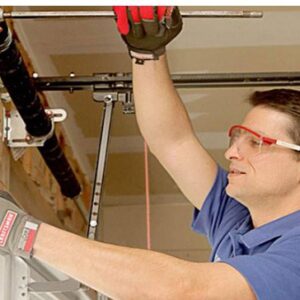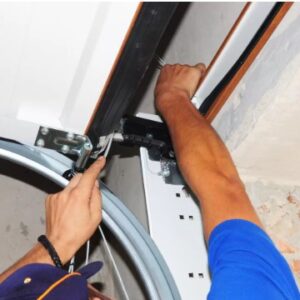Keeping industrial operations running efficiently often depends on the reliability of compressed air systems. When production stops because of a compressor failure, the loss is not only in repair costs but also in wasted time and missed opportunities. Preventive maintenance provides a way to avoid these costly interruptions. By focusing on consistent care rather than emergency fixes, we protect performance, extend equipment life, and keep energy costs under control.
Understanding the Role of Preventive Maintenance
Every compressor system works under continuous stress. Over time, wear, vibration, and dirt affect its performance. Preventive maintenance means inspecting, cleaning, and replacing parts before failure occurs. Instead of reacting to problems, we act early. This approach saves both time and money by reducing unplanned downtime and preventing minor issues from becoming serious mechanical failures.
When maintenance is consistent, the compressor runs closer to its designed efficiency. It draws less energy, produces steady air pressure, and maintains proper lubrication and cooling. The result is smoother operation and more predictable costs.
Why Downtime Costs More Than Repairs
When equipment stops unexpectedly, the losses multiply fast. Workers stand idle, production schedules collapse, and delivery timelines shift. Sometimes the biggest expense is not the broken part but the lost productivity.
A single failed seal, clogged filter, or oil leak can halt an entire production line. Repairs made under pressure are always more expensive because technicians must diagnose and fix issues immediately. Replacement parts may not be available on short notice, forcing longer shutdowns. By investing in regular inspections and service, we reduce the chance of this happening. Planned maintenance allows us to replace parts at convenient times, with minimal disruption to operations.
The Connection Between Maintenance and Efficiency
Air compressors consume a large portion of a facility’s total energy. When they operate inefficiently, costs rise quickly. Dirty filters, worn seals, and neglected oil systems make compressors work harder to deliver the same pressure. This extra effort increases both power consumption and wear.
Regular maintenance corrects these inefficiencies. Cleaning or replacing air filters, checking pressure drops, and maintaining oil purity ensure that the compressor performs at peak efficiency. Even small improvements in airflow or energy use can add up to significant savings over time. Efficient systems also generate less heat, which helps other connected equipment perform better.
For a broader understanding of how maintenance ties into energy efficiency and overall system performance, you can explore more about compressed air systems and the key principles that keep them operating reliably.
Predictability and Budget Control
Preventive maintenance adds predictability to operations. Instead of facing uncertain breakdowns, we can schedule inspections and replacements in advance. This planning provides control over both maintenance schedules and expenses.
Service intervals become part of regular operations rather than interruptions. When technicians check oil quality, inspect belts, and measure vibration, they collect data that helps forecast component life. Predictive maintenance, built upon this consistent monitoring—extends this benefit even further. It allows us to anticipate which parts will fail soon and prepare replacements before the breakdown happens.
Extending Equipment Life
Every mechanical system has a lifespan, but how long it lasts depends on care. Compressors are no different. Routine maintenance such as cleaning coolers, replacing filters, and monitoring oil levels helps the system run with less friction and heat. Reduced friction means less strain on bearings, rotors, and seals.
A compressor that receives scheduled care can last years longer than one that only gets attention during breakdowns. Each extra year of reliable operation means a stronger return on the original investment. Long equipment life also means fewer disposal and replacement costs, which benefits both the budget and the environment.
Maintaining Air Quality and System Integrity
Compressed air quality affects both equipment performance and end products. Moisture, oil, and particulates in the system can damage tools, valves, and final goods. Preventive maintenance addresses these risks by ensuring that dryers, separators, and filters are all functioning correctly.
Contaminated air can also cause corrosion inside pipes and fittings, leading to leaks that waste energy. Regular inspections catch small leaks before they grow, keeping the entire system efficient and stable. Over time, even small leaks can account for thousands of dollars in wasted electricity, so early detection pays off quickly.
The Value of Data and Documentation
Every maintenance visit provides valuable information. Recording pressure readings, vibration levels, oil condition, and filter changes builds a service history that helps identify patterns. Over time, this data becomes a tool for improvement.
We can analyze performance trends to adjust service intervals, identify weak points, or justify upgrades. This recordkeeping also supports compliance with safety and quality standards. When auditors or clients request documentation, we can show evidence of consistent, responsible equipment management.
Reducing Environmental Impact
A well-maintained compressor system uses less energy and releases fewer emissions. Clean filters and efficient cooling mean lower power draw and less heat waste. Preventive maintenance helps reduce oil consumption and prevents leaks from contaminating the workplace or surrounding areas.
Sustainability goals often focus on major changes, but small operational habits like regular maintenance can make an equal difference. Energy saved through efficient operation directly reduces the carbon footprint of an industrial facility.
Signs That Maintenance is Overdue
While a structured plan helps avoid problems, there are warning signs that indicate maintenance may be overdue. A drop in air pressure, rising energy bills, or unusual noises suggest mechanical wear. Oil leaks, moisture buildup, or irregular cycling often point to neglected filters or lubrication.
These symptoms should never be ignored. They are early signals that the system needs attention. Fixing them promptly avoids a complete breakdown. Creating a simple checklist for operators to follow during daily inspections is one of the most effective low-cost strategies for early detection.
Creating a Maintenance Schedule That Works
Every facility’s schedule will look different, depending on workload and environment. However, the key principles remain consistent. Start by setting inspection intervals based on operating hours rather than calendar dates. This ensures maintenance aligns with actual usage.
Include key checkpoints such as air filter cleaning, oil changes, belt inspection, leak detection, and pressure verification. Assign responsibility clearly so each task has an owner. Keep records digitally if possible for easier tracking and data analysis.
Scheduling downtime strategically, during off hours or low-demand periods, allows maintenance to occur without affecting productivity. Over time, this regular rhythm creates reliability that everyone can count on.
The Long-Term Cost Advantage
The true value of preventive maintenance is not visible in one or two service visits but in long-term savings. Avoided downtime, lower repair bills, reduced energy use, and extended equipment life add up. Even modest investments in scheduled maintenance can result in significant returns when measured across years of operation.
In contrast, reactive maintenance, waiting until something breaks, often leads to multiple failures at once. When one part fails, it can damage others. The cost of replacing multiple components and restarting operations far exceeds that of regular upkeep.
Facilities that take maintenance seriously also experience better safety records and less stress for staff. A calm, planned workflow always costs less than emergency repairs.
When to Seek Professional Help
Not every maintenance task requires outside assistance, but some do. When dealing with complex diagnostics, electrical components, or high-pressure systems, professional service is essential. Skilled technicians bring both specialized tools and experience to detect problems before they become visible.
If a system shows repeated pressure fluctuations, frequent oil contamination, or inconsistent output despite regular service, it may need expert evaluation. Technicians can use thermal imaging, vibration analysis, and other tests that go beyond standard inspection. These assessments help determine whether to repair, rebuild, or upgrade the compressor for better performance.
When further support or inspection is needed, the most direct option is to contact us for professional guidance and assistance with any air compressor system.
Developing a Culture of Maintenance
Preventive maintenance is not only about technical steps but also about attitude. When everyone in the facility treats maintenance as a shared responsibility, results improve. Operators who listen to their machines and report issues early play an essential role.
Management must reinforce this culture by recognizing the value of maintenance work. Setting aside regular time for checks, allocating resources for spare parts, and rewarding proactive actions all encourage consistency. Over time, this habit becomes part of the company’s operational identity, ensuring reliability across every system.
Frequently Asked Questions
- How often should air compressors be serviced?
Service intervals depend on operating hours and environmental conditions. Most compressors need inspection every 1,000 hours or quarterly, but systems in dusty or humid environments may require more frequent checks. - What parts are most important to inspect regularly?
Focus on filters, oil levels, belts, coolers, and safety valves. These components experience constant wear and directly affect performance and safety. - How can I tell if my system is wasting energy?
Unexplained increases in power use, frequent cycling, or reduced air pressure usually indicate leaks or restrictions that waste energy. Monitoring energy data and checking for leaks helps detect inefficiencies early. - Is preventive maintenance different from predictive maintenance?
Yes. Preventive maintenance follows a regular schedule, while predictive maintenance uses data and sensors to anticipate failures before they happen. Both approaches can work together effectively. - What happens if maintenance is ignored for too long?
Ignoring maintenance leads to equipment degradation, rising energy costs, and sudden breakdowns. Over time, it shortens the lifespan of compressors and increases total ownership costs.





